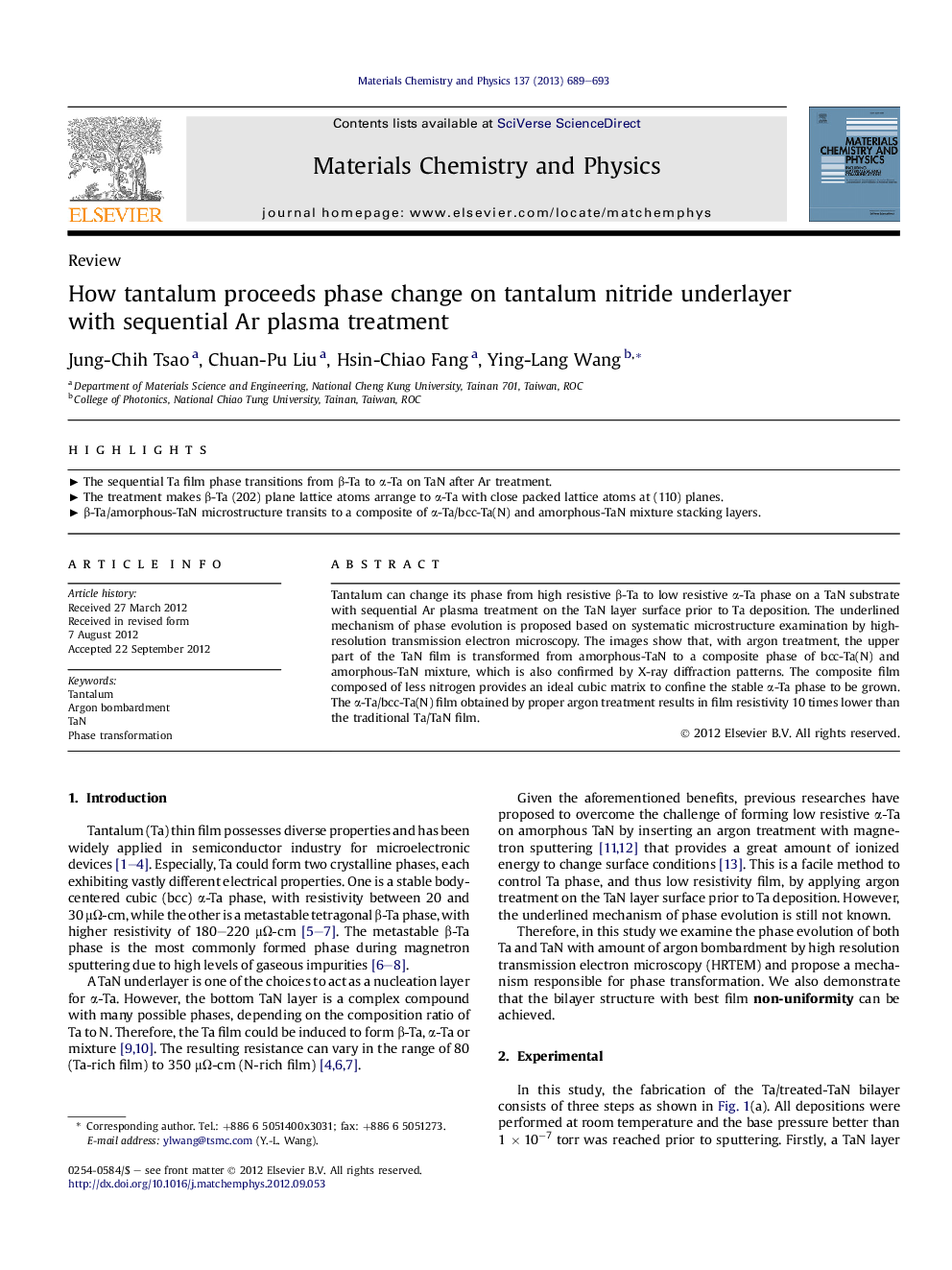| Article ID | Journal | Published Year | Pages | File Type |
|---|---|---|---|---|
| 1523160 | Materials Chemistry and Physics | 2013 | 5 Pages |
Tantalum can change its phase from high resistive β-Ta to low resistive α-Ta phase on a TaN substrate with sequential Ar plasma treatment on the TaN layer surface prior to Ta deposition. The underlined mechanism of phase evolution is proposed based on systematic microstructure examination by high-resolution transmission electron microscopy. The images show that, with argon treatment, the upper part of the TaN film is transformed from amorphous-TaN to a composite phase of bcc-Ta(N) and amorphous-TaN mixture, which is also confirmed by X-ray diffraction patterns. The composite film composed of less nitrogen provides an ideal cubic matrix to confine the stable α-Ta phase to be grown. The α-Ta/bcc-Ta(N) film obtained by proper argon treatment results in film resistivity 10 times lower than the traditional Ta/TaN film.
► The sequential Ta film phase transitions from β-Ta to α-Ta on TaN after Ar treatment. ► The treatment makes β-Ta (202) plane lattice atoms arrange to α-Ta with close packed lattice atoms at (110) planes. ► β-Ta/amorphous-TaN microstructure transits to a composite of α-Ta/bcc-Ta(N) and amorphous-TaN mixture stacking layers.
